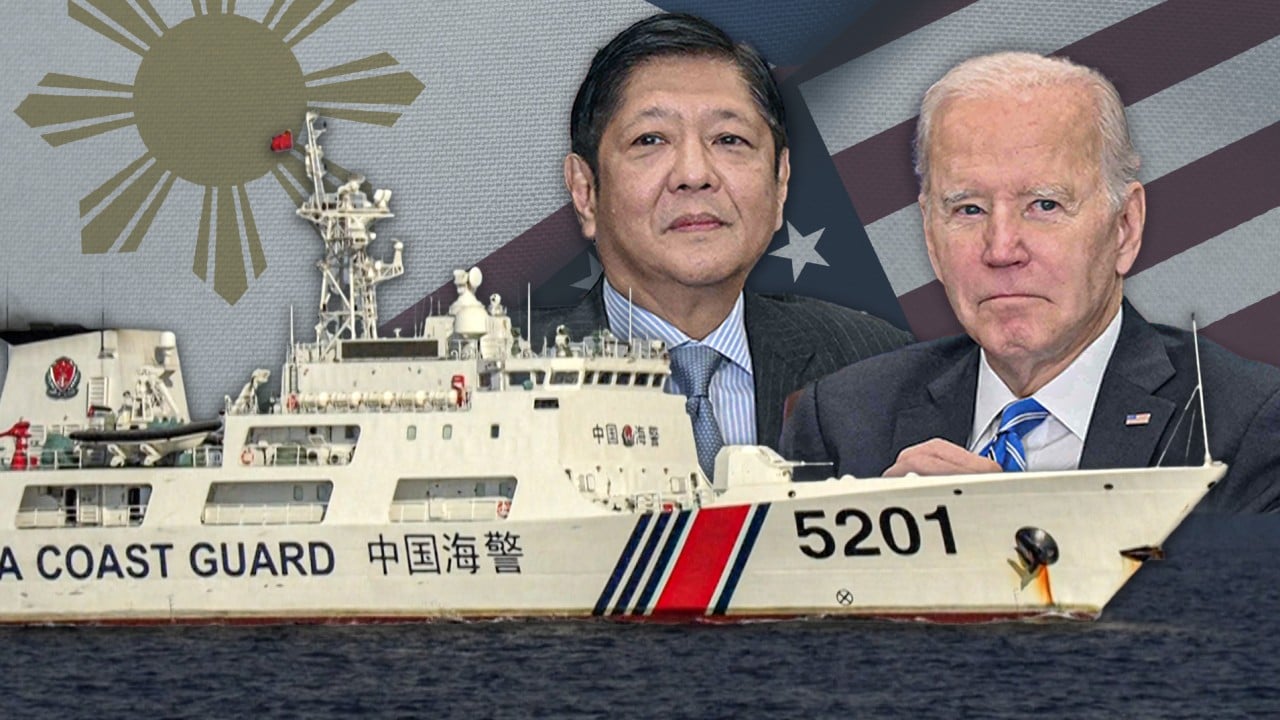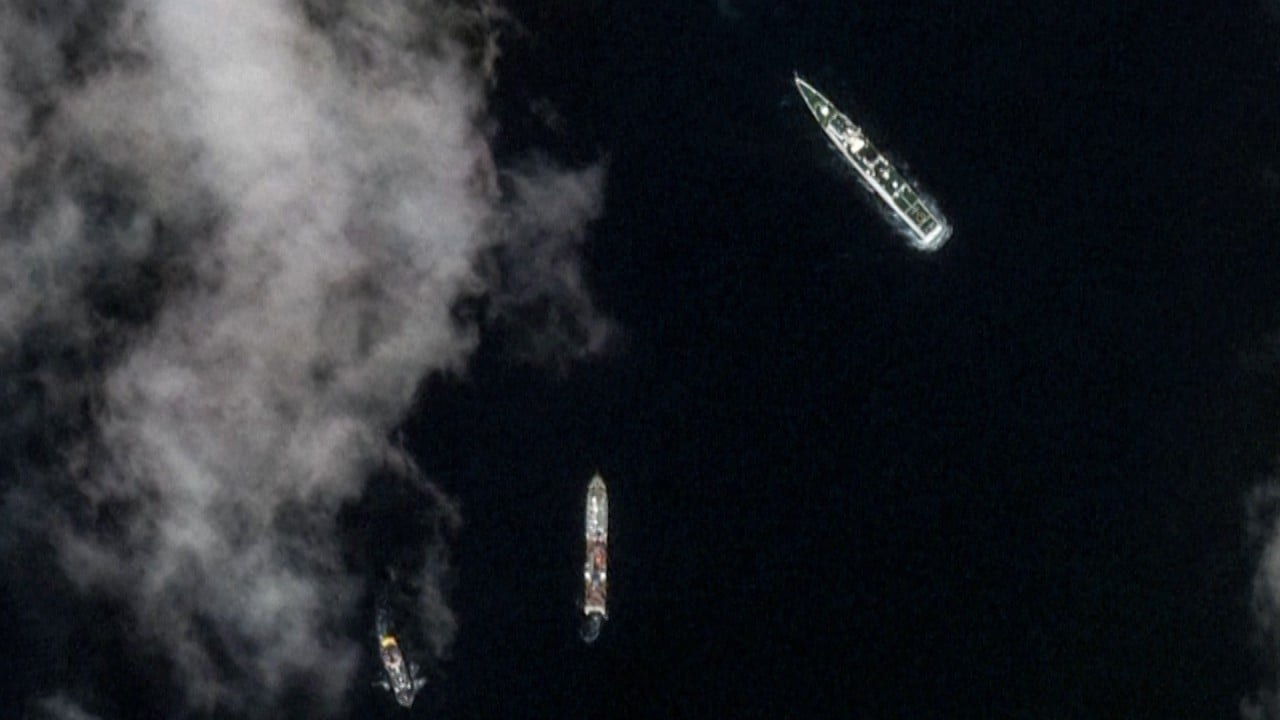
Chinese navy live-fire drills a ‘timely and forceful response’ to Philippines’ tilt to US, expert says
- PLA warships simulate attacks on ‘armed enemy fishing boats’ in South China Sea ahead of annual Balikatan military exercises
- War games mimicking ‘complex battlefield environments’ show Beijing wants to bolster territorial claims in recent maritime disputes
Chinese state media said the exercises, conducted by the Southern Theatre Command of the People’s Liberation Army (PLA), were “high-intensity and multi-course real combat training” aimed at boosting the military’s combat capabilities in “complex battlefield environments”.
According to a report on state broadcaster CCTV on Saturday, several Chinese warships including Xueshan and Lushan were sent to an unnamed area of the South China Sea to sink enemy targets such as armed militia fishing boats.
Other PLA ships, including Guangzhou, Dali and Chenzhou, have also recently conducted daytime and nighttime exercises separately in the South China Sea, the southern command said on Saturday.
The nationalist tabloid Global Times newspaper said the drills were designed to “test the contingency response capabilities of officers and soldiers, their ability to actually use weapons and their command coordination in complex battlefield environments”.
The paper said training modules included “dealing with complex and changeable enemy situations at sea and in the air – such as suspicious targets, armed enemy fishing boats, weapons threats, and other hostile elements”.
While the drills were part of the PLA’s training routines, Ni Lexiong, a Shanghai-based military analyst and former politics professor at the Shanghai University of Political Science and Law, said they were symbolically significant at a sensitive time.
“China clearly wants to reiterate its territorial claims in the maritime disputes and demonstrate that it is on high alert. The drills should be seen as a timely and forceful response from Beijing to a series of recent moves by the Philippines and the US threatening China’s strategic interests,” he said.
Tensions have been ratcheted up between China and the Philippines in recent months following collisions between Chinese coastguard ships and Philippine vessels near the contested Second Thomas Shoal, known in China as Renai Reef, in October.
China warns close military ties between US, Philippines could trigger conflict
Tempers flared last week, when Beijing again fired a water cannon at a Philippine vessel on a resupply mission to a group of soldiers guarding a decaying warship intentionally grounded on a reef 25 years ago to bolster a sovereignty claim. Several Philippine military personnel were injured in last week’s clash.
“No one wants to further escalate the situation or a conflict, but neither side can afford to back down at the moment either. They have to talk tough on the sensitive territorial issues and make necessary preparations,” Ni said.
Philippines prepared for ‘worst-case scenario’ as South China Sea tensions rise
“But it does not mean they cannot coexist peacefully pending solutions to the highly charged maritime disputes. I think all sides need to remain calm and clear-eyed to prevent a mishap or a real conflict,” he added.
At least 11,000 American and 5,000 Philippine troops are expected to participate in this year’s exercises, known as Balikatan, or “shoulder to shoulder”, which kick off on April 22 and run until May 8. The French navy will also participate for the first time in the drills, which also include Australia’s navy.
At an unprecedented three-way summit scheduled next week in Washington, Marcos is expected to unveil plans with US President Joe Biden and Japanese Prime Minister Fumio Kishida to launch joint naval patrols in the South China Sea.



